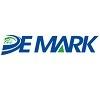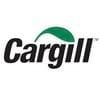The role of macrophages and the inhibition of highly pathogenic PRRS virus replication in pigs fed tylvalosin tartrate-medicated feed
Published: November 6, 2025
Source : M. Takagi 1*, A. Bayanzul 2, N. Hattori 1, K. Kawashima 1, T. Shibahara 1, M. Ikezawa 1 / 1 National Institute of Animal Health, Tsukuba, Japan; 2 Mongolian State University of Agriculture, Ulaanbaatar, Mongolia.
Summary
Keywords: Macrophage, Porcine reproductive and respiratory syndrome virus (PRRSV), Tylvalosin tartrate
Introduction:
An atypical and highly pathogenic porcine reproductive and respiratory syndrome (HP-PRRS) variant has occurred in China and Southeast Asia. This disease was characterized by a high fever of above 41˚C, anorexia, red discoloration of the ears (blue ear) and high mortality in pigs of all ages. Recently, it has reported that macrolide antibiotics may have an anti-viral effect on PRRSV. We previously demonstrated that the macrolide antibiotic, tylvalosin tartrate, had anti-viral activity against HP-PRRSV replication in vitro. In the present study, the macrolide antibiotic was tested for anti-viral activity against HP-PRRSV replication and for the role of macrophages in vivo.
Materials and Methods:
Fifteen 4-week-old specific pathogen-free pigs were used in the experimental infection. Six pigs (group 1) and 3 pigs (group 3) were fed with 200 ppm of Aivlosin® plus 10 (1% premix of tylvalosin tartrate, ECO Animal Health Inc.) a day per pig for one week before the viral inoculation and during the experiment period. Group 1 and another 6 pigs (group 2) were intranasally inoculated with 105 TCID50/pig Vietnamese HPPRRSV isolate 2010 (100186-614 strain), while group 3 was used as uninfected control All pigs were monitored daily for clinical signs. Blood and oral fluids were sequentially collected until 12 days post-inoculation (dpi). When all pigs were necropsied at 12 dpi, gross findings were assessed and a bacterial examination was carried out. Viral RNA in the serum and tissues were measured by quantitative real time RT-PCR. The proportion of macrophages in PBMC was analyzed by flow cytometry.
Results:
All pigs in groups 1 and 2 exhibited high fever, anorexia and dyspnea. During the experiment period, only one pig in group 2 died at 11 dpi. Moreover, one pig in each group 1 and 2 were moribund at 12 dpi and E.coli was isolated from these pigs at necropsy. Hemorrhages and consolidation of lung and blood spots in kidney were observed. Other pigs in infected group 1 and 2 had pneumonia and enlargement of various lymph nodes. The amount of PRRSV RNA in serum, oral fluid and tissues in group 1 was significant less than those of group 2 and the percentage of macrophages in PBMC of group 1 was lower than that in group 2. No clinical signs and lesions were observed in control animals (Group 3).
Conclusion:
The replication of HP-PRRSV and the number of macrophages was reduced in pigs fed with Aivlosin®, tylvalosin tartrate, compared with the inoculated animals without untreatment. Like the result in vitro, the replication of HP-PRRSV might be inhibited by the antiviral activity of macrophages having improved, of pigs fed with tylvalosin tartrate.
Disclosure of Interest: None Declared.
Published in the proceedings of the International Pig Veterinary Society Congress – IPVS2016. For information on the event, past and future editions, check out https://www.theipvs.com/future-congresses/.
Content from the event:
Related topics:
Recommend
Comment
Share

Would you like to discuss another topic? Create a new post to engage with experts in the community.









